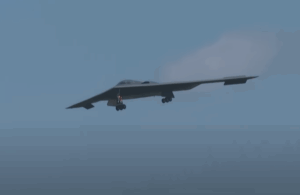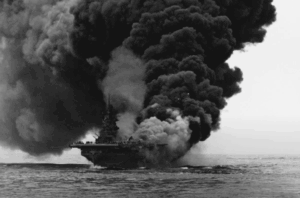Why This German Fighter Was Trapped In Development Purgatory

YouTube / IHYLS
Originally conceived as the Messerschmitt Me 155, the Blohm & Voss BV 155 was Germany’s answer to high-altitude threats like the American B-29 Superfortress. It began with promise—as a naval fighter, bomber, and interceptor—but its journey was plagued by shifting priorities, design overhauls, and bad timing, ultimately dooming it to development purgatory.

Origins and Early Design
The Me 155 was born out of the need to replace the outdated Bf 109T. Using the fuselage and tail of the Bf 109G and pairing it with a larger, folding wing, Messerschmitt aimed to keep production efficient. Armed with five guns—a 20mm nose cannon, two 20mm wing cannons, and two 13mm machine guns—the Me 155 seemed like a strong contender, boasting a top speed of 403 mph with a DB605 engine.

But just as it was nearing production, its intended home—the Graf Zeppelin aircraft carrier—was sidelined. With no carrier, the project lost its footing.
Redefining the Role
Messerschmitt tried salvaging the project by converting it into a Schnellbomber, stripping the guns and modifying it to carry a 2,200-lb SC 1000 bomb. That version never materialized, but it paved the way for a new proposal: a high-altitude interceptor to counter the looming threat of B-29 raids.

Thus, the Me 155B was born—with pressurized cockpit, longer wings (13m span), and an upgraded engine that pushed its estimated service ceiling to 46,250 feet.
Enter Blohm & Voss
In 1943, Blohm & Voss took control of the project, redesigning it extensively and renaming it the BV 155. The airframe was transformed:

-
A completely new wing design
-
Enlarged tail surfaces
-
Landing gear borrowed from the Ju-87 Stuka
-
Revised radiator system and cleaner air intake design
-
Upgraded armament: a 30mm cannon and two 20mm wing guns
Its odd silhouette made the BV 155 one of the most bizarre-looking fighters of the war.
Stuck in Development Hell
Construction began in early 1944, and by September, the BV 155 V1 prototype had its maiden flight. However, performance was underwhelming. The V2 prototype followed in February 1945, but it failed to hit the projected 430 mph speed or meet altitude targets.

Work began on the improved BV 155C, with around 30 pre-production models under way. But it was too late. Before the aircraft could be finalized, Allied forces captured the Blohm & Voss factory, bringing the program to a halt.
Legacy of Lost Potential
Spanning nearly seven years of design evolution, the BV 155 ended as little more than a collection of prototypes and blueprints.

Though it never saw combat, the aircraft remains a fascinating case study in how even promising innovations can get lost in the fog of war, shifting priorities, and a race against time.




















